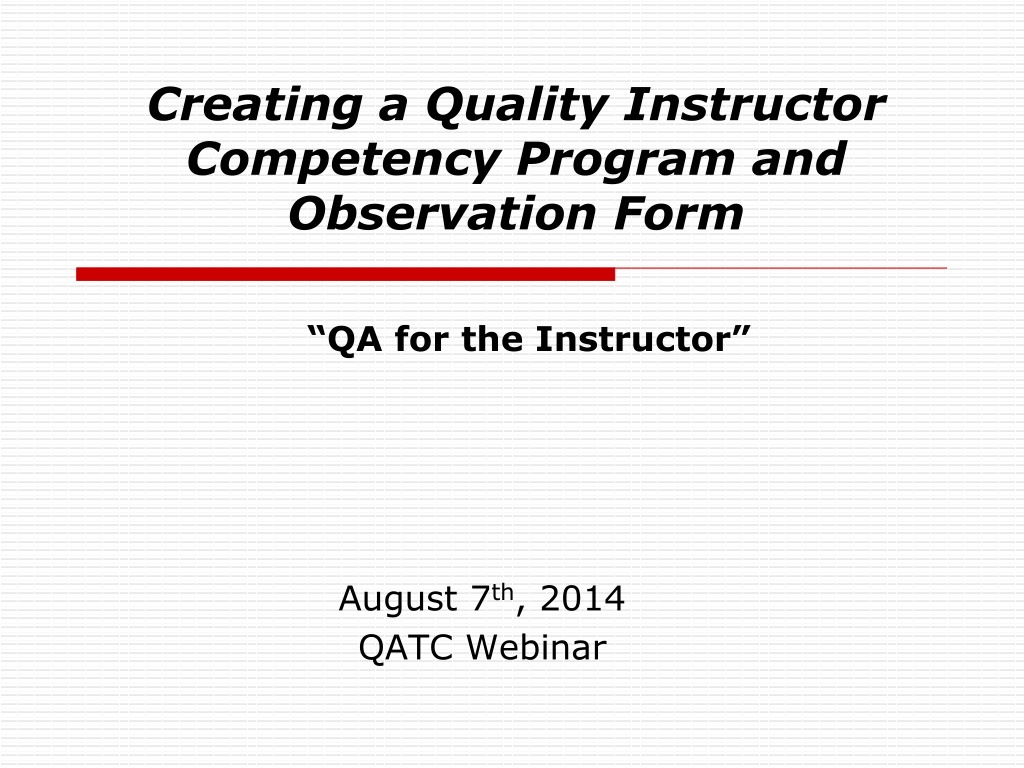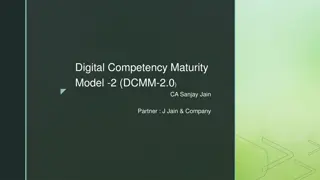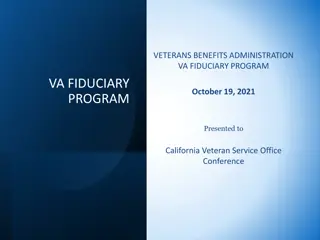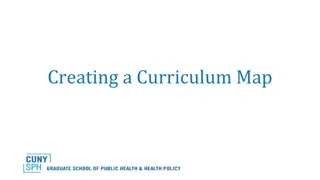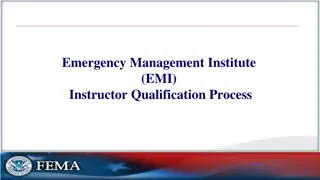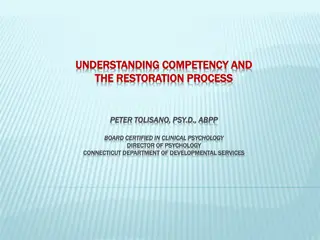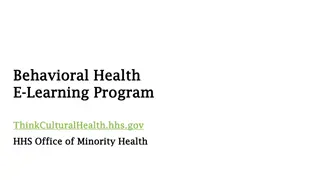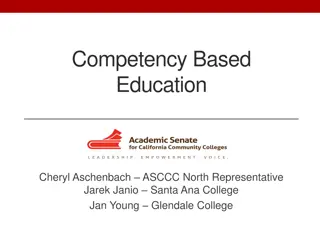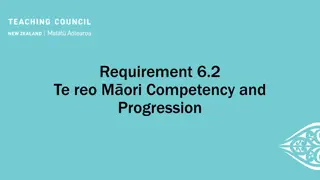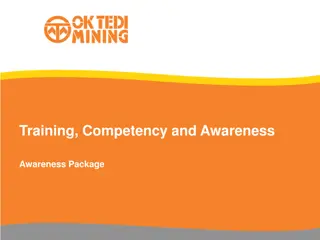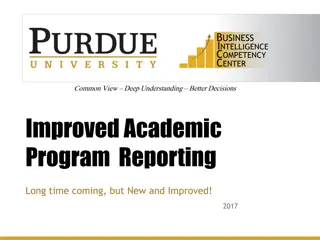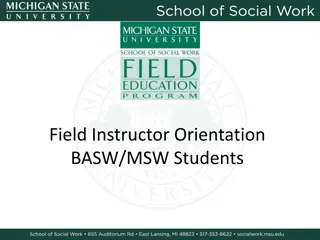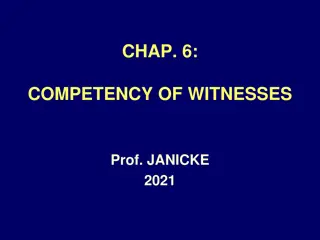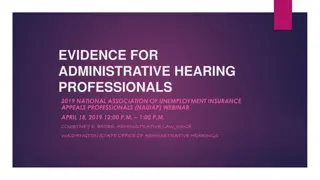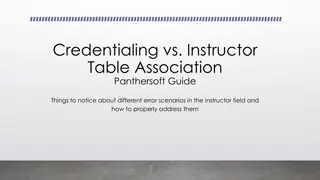Creating Quality Instructor Competency Program
Speaker insights on instructor competency programs, Kirkpatrick's model for evaluation, essential competencies & best practices, observation form QA, and more. Learn why these programs are crucial for improving learning outcomes and performance management.
Uploaded on Feb 20, 2025 | 0 Views
Download Presentation

Please find below an Image/Link to download the presentation.
The content on the website is provided AS IS for your information and personal use only. It may not be sold, licensed, or shared on other websites without obtaining consent from the author.If you encounter any issues during the download, it is possible that the publisher has removed the file from their server.
You are allowed to download the files provided on this website for personal or commercial use, subject to the condition that they are used lawfully. All files are the property of their respective owners.
The content on the website is provided AS IS for your information and personal use only. It may not be sold, licensed, or shared on other websites without obtaining consent from the author.
E N D
Presentation Transcript
Creating a Quality Instructor Competency Program and Observation Form QA for the Instructor August 7th, 2014 QATC Webinar
Your Speakers Today G. Todd Gladden, CWPP Principal & Managing Consultant - DeNOVO Consulting Group TGdenovo@att.net Jana Meyers Director- Training, Development and Support American Century Investments Jana_Meyers@americancentury.com
Our Topics Why Instructor Competency Training Program? Kirkpatrick s Model of Training Evaluation Basic Instructor Competencies & Best Practices QA for the Instructor Observations Sample Instructor Observation Form Case Study of Instructor Observations Questions & Closing
Polling Question What type of Instructor Competency Program do you currently have? 1. No Formal Training 2. Content Training & Minor Competencies around Delivery 3. Delivery, Content & Leadership 4. Full Instructor Competencies Taught & Observed
Why Instructor Competency Training Programs? Ensure the Quality and Integrity of Learning/Development Enhance Time to Proficiency (T2P) and knowledge retention of students Create Foundation for Instructor Evaluation & Performance Management Improve the Bottom Line / ROI
Next Polling Question What Level of Kirkpatrick Evaluation do you currently use for Training? Level 1 Smiley Face Sheets Level 1&2 Adding Assessments at critical points of training Level 1,2,3 Adding On-the-Job Performance Behaviors evaluated All Levels Kicking it in High Gear & ROI 1. 2. 3. 4.
Kirkpatricks Evaluation Model and Instructor Competencies
Basic Instructor Competencies (IC) Preparation - Classroom set-up, system checks, logistics, ground rules, expectations, etc. Delivery - Platform Skills, introducing lessons/objectives, content knowledge, varying delivery styles, politically correct training Communication - Checks for understanding, effective questioning, creating open/interactive learning environment, working the room , continuous improvement feedback on content Leadership - Leading students into making real world connections, support vision/organizational strategies, change champions, attitude Content - Knowledge of ALL aspects of the training; policies, systems, etc.
Internal vs. External IC Training Many External Companies - Most focus on Components - Tie in with Certification Internal Delivery an option - Can be Cost-effective - Average 3-4 days
Best Practice IC Training Topics Adult Learning Needs 4P Learning Model (or variation) - Preparation, Presentation, Practice & Proficiency Assessment Delivery Techniques; Instructor Led as well as Virtual/Webinar/Facilitator Questioning, Feedback, Debrief & Discussion Leadership, Change Agent, Cheerleader
Best Practice IC Training Topics, Cont d Managing Nervousness & Displaying Confidence Effective Summarization of Objectives Communication Skills Skill Practice and Assessment
Summary So what have we Learned so far? Why Instructor Competency Programs? Kirkpatrick s Evaluation Model and IC Basic Instructor Competencies Internal Development vs. External Best Practice Competency Topics
QA for the Instructors? Why Instructor Observations? - Insure the Integrity of Learning/Development & Continuous Improvement - Create foundation for Instructor Evaluation & Performance Management - Develop Individuals to Performance Excellence
Last Polling Question How many of you perform Instructor Observations? 1. Don t Observe Use Smiley Sheets to assess 2. Observe but with no form 3. Use Form with formal Observation Process
Sample Instructor Observation Form Divided into 4 main Competency Areas: - Preparation - Delivery - Communication - Leadership - Additional area for Content Specific Knowledge Formulas for weighting/averaging of Ratings Final Sections for Areas of Expertise/Skills, Improvement and Commitments for Development w/ Signatures
Case Study on Instructor Competencies/Observations Challenge: New to managing trainers Question: How to review and evaluate their effectiveness?
Case Study: Business Rationale Why evaluate? Learner experience and competency Individual performance and feedback How to tell the story back to the business What to use? Internal old form Creating a new form Using an Expert s form*
Case Study: What did this accomplish? Applications: In the classroom Tweaked form to fit our approach Provided framework to test assumptions Feedback capture Hiring Expert form Internal form
Case Study: Results Gains Trainers feel heard and observed Non-trainer training manager has set of standards Challenges Time Repeatability and consistency New trainers in the classroom this year
Questions & Closing Just Do It and reap the benefits Develop It and they will Come Thank you for Attending! Hope to see you at the QATC Conference
